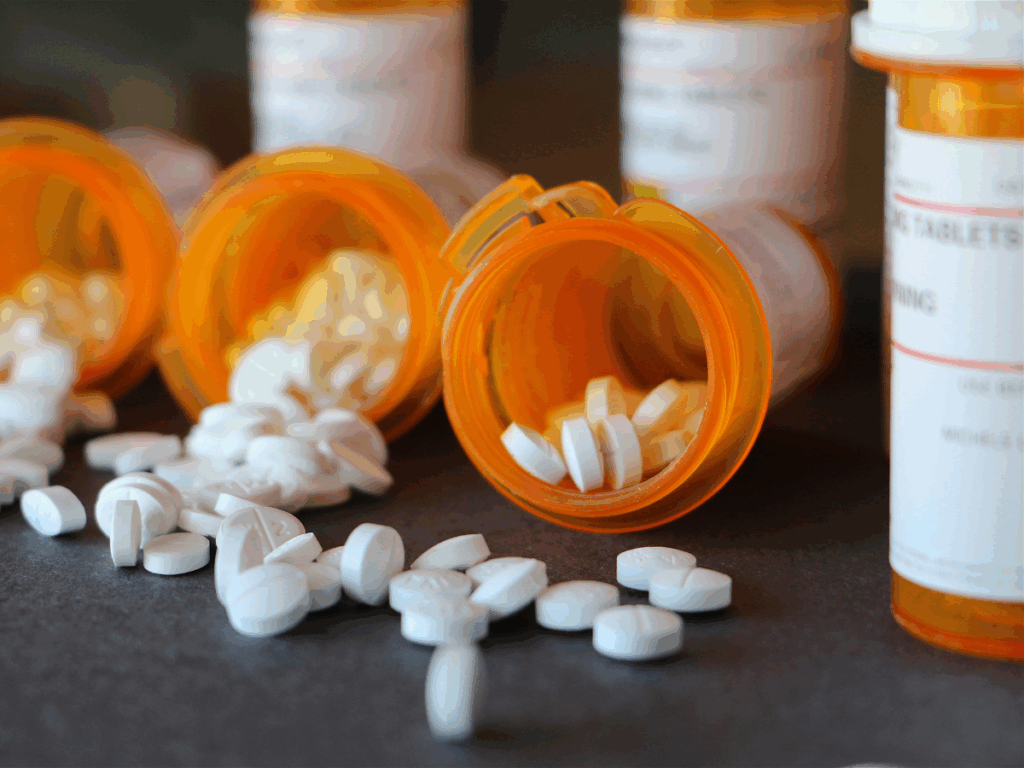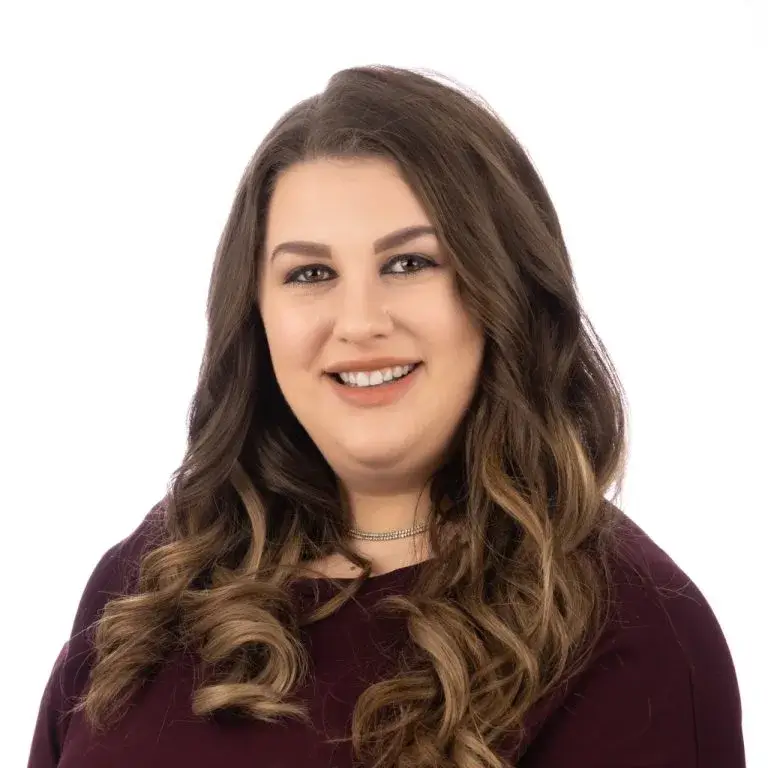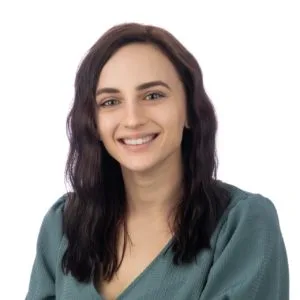
What Are Prescription Drugs?
Prescription drugs are medications a licensed clinician authorizes to treat specific medical conditions. U.S. law classifies many of them as controlled substances, Schedule II through V under the Controlled Substances Act, because of their potential for misuse and diversion.
Prescription medications, when taken exactly as directed, can relieve pain, calm anxiety, or improve focus. Yet these same benefits can reinforce repeated use, setting the stage for dependence and addiction. Even with progress, opioids, benzodiazepines, and prescription stimulants continue to drive preventable illness and death.
Three broad classes account for most addiction cases:
- Opioids (e.g., oxycodone, hydrocodone, morphine) relieve moderate-to-severe pain but also trigger intense euphoria.
- Central nervous system (CNS) depressants, primarily benzodiazepines (e.g., alprazolam, diazepam), treat anxiety, panic, and insomnia.
- Prescription stimulants (e.g., amphetamine-salt combos, methylphenidate) raise dopamine and norepinephrine to manage ADHD or narcolepsy.
Misuse may involve taking larger or more frequent doses than prescribed, combining pills with alcohol or other drugs, or using someone else’s medication.
Recognizing Prescription Drug Use Disorder and Addiction
Early detection shortens the path to recovery. Warning signs include lost prescriptions, repeated requests for “refills,” secrecy around pill counts, and declining performance at work or school. Physical cues vary by drug type:
- Opioids: pinpoint pupils, constipation, slowed breathing
- Benzodiazepines: slurred speech, poor coordination, memory lapses
- Stimulants: rapid speech, dilated pupils, weight loss, insomnia
Emotionally, people may appear irritable, anxious, or apathetic, and may withdraw from social circles. Family members who notice any combination of behavioral, physical, or psychological changes should encourage a professional evaluation.
What Makes Prescription Drugs Addictive?
Short answer: They hijack the brain’s reward circuitry and exploit human biology and psychology.
Biological Factors
- Dopamine surges
Opioids and stimulants flood the nucleus accumbens with dopamine, teaching the brain to keep seeking the drug. Benzodiazepines boost GABA, producing a calm that becomes hard to replicate naturally. - Genetic vulnerability
Twin studies show that up to 50 % of addiction risk is inherited; variants in genes regulating dopamine, opioid, and GABA receptors can heighten susceptibility. - Tolerance and neuroadaptation
Repeated exposure forces neurons to adapt—reducing receptor sensitivity or number—so larger doses are required to feel “normal.”
Psychological Factors
- Co-occurring mental health disorders
Anxiety, depression, PTSD, or ADHD increase the likelihood of self-medication with prescription drugs. - Stress and trauma
Chronic stress elevates cortisol, priming the reward system for stronger drug‐induced relief. - Learned associations
Environmental cues—pill bottles, specific rooms—become triggers, activating craving even after detox.
How Do Prescription Drugs Affect the Brain?
Prescription drugs change both brain chemistry and circuitry, which is why addiction is often described as a chronic brain disease.
Short- and Long-Term Effects on the Brain
- Opioids quickly plug into μ-opioid receptors, muting pain but also suppressing the brain-stem centers that regulate breathing. Chronic exposure can shrink grey matter in decision-making regions, undermining impulse control.
- Benzodiazepines enhance GABA’s inhibitory action, producing sedation. Extended use down-regulates GABA receptors and up-regulates excitatory glutamate, leaving the brain hyper-excitable during withdrawal.
- Stimulants spike dopamine and norepinephrine, sharpening focus. Long-term misuse can reduce natural dopamine production, leading to anhedonia and cognitive deficits.
Structural MRI studies reveal that protracted misuse of any of these classes can thin the prefrontal cortex and weaken connections to the limbic system, impairing judgment and increasing relapse risk even after months of abstinence.
How Do Prescription Drugs Affect the Body?
Beyond the brain, each drug class inflicts distinct systemic harm.
Short- and Long-Term Effects on the Body
Opioids
- Short term: constipation, nausea, itching, slowed GI motility.
- Long term: opioid-induced hyperalgesia, suppressed immune function, endocrine dysfunction (e.g., low testosterone).
Benzodiazepines
- Short term: lowered blood pressure, muscle weakness.
- Long term: increased risk of falls, fractures, and persistent cognitive decline in older adults.
Stimulants
- Short term: elevated heart rate and blood pressure, reduced appetite.
- Long term: cardiomyopathy, arrhythmias, severe weight loss, and dental erosion (“meth mouth”).
Overdose Risk
- Opioid overdose depresses respiratory drive; death may occur within minutes. Naloxone can reverse effects if given promptly.
- Benzodiazepine overdose seldom causes fatal respiratory depression alone but is lethal when combined with opioids or alcohol.
- Stimulant overdose triggers hyperthermia, seizures, stroke, or sudden cardiac arrest.
Poison-control data show that counterfeit pills laced with fentanyl now drive a majority of prescription-opioid deaths.
Prescription Drug Withdrawal and Treatment
Stopping use suddenly is dangerous.
- Opioids: muscle and bone pain, diarrhea, vomiting, gooseflesh, severe cravings—peak 48-72 h post-dose and subside within 7-10 days.
- Benzodiazepines: rebound anxiety, tremors, insomnia, and, at high doses or long duration, life-threatening seizures; symptoms can fluctuate for weeks or months, requiring a slow taper.
- Stimulants: profound fatigue, depression, hypersomnia or insomnia, increased appetite, vivid dreams; most resolve within 1–2 weeks, but anhedonia may linger.
Medical detox provides 24/7 monitoring, symptom-relief medications (e.g., buprenorphine for opioids, long-acting diazepam for benzos), IV fluids, and psychological support.
Treatment Programs for Prescription Drug Addiction
At Legacy Healing Center, we offer a variety of treatment programs designed to meet you where you are in your recovery journey, each step thoughtfully tailored to support lasting healing.
- Inpatient/Residential Rehab: A substance-free environment with round-the-clock care, ideal for severe or multi-drug dependence
- Partial Hospitalization Programs (PHP): Full-day therapy schedule that allows clients to go home or to a sober living facility in the evenings
- Intensive Outpatient Programs (IOP): Partial-day therapy schedule that includes group and individual counseling, giving clients the flexibility to maintain work or family obligations
- Outpatient Therapy: Weekly sessions; suits milder cases or step-down care
- Medication-Assisted Treatment (MAT) remains the gold standard for opioid use disorder. Buprenorphine, methadone, and extended-release naltrexone cut mortality by more than 50 % when combined with counseling. Cognitive-behavioral therapy (CBT), contingency management, and 12-step or SMART Recovery groups help patients build coping skills and support networks.
Building a Life in Recovery
Long-term recovery hinges on relapse-prevention plans that identify triggers, regular mental-health follow-up, and lifestyle redesign—healthy sleep, balanced nutrition, exercise, purposeful work, and relationships that reinforce sobriety. Community resources such as DEA-sponsored Drug Take-Back Days simplify safe disposal of leftover medications and reduce household diversion risks.
If you or someone you love is struggling with prescription-drug misuse, know that effective, evidence-based help is within reach. With medical care, behavioral therapy, and unwavering support, lasting recovery is possible. Reach out to Legacy Healing Center to take the first step toward sustainable freedom from addiction.
Immediate Help and Support
Whether you’re seeking clarity for yourself or support for someone you love, help is available—and it starts with a conversation.
Legacy Healing Center: Call (888) 534‑2295 to speak confidentially with a specialist in prescription drug addiction. We’re here 24/7 to listen, guide, and help you take the next step.
SAMHSA National Helpline: Dial 1‑800‑662‑HELP (4357) for free, round-the-clock support and treatment referrals for individuals and families affected by substance use.
988 Suicide & Crisis Lifeline: Dial 988 from any phone for immediate assistance in a mental health or substance-related emergency.
You are not alone, and you don’t have to navigate this alone. Support is just one step away.


 Written By:
Written By: Edited By:
Edited By: Clinically Reviewed By:
Clinically Reviewed By: 




 Verify Insurance
Verify Insurance